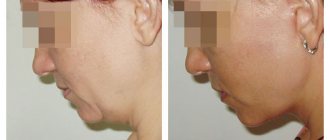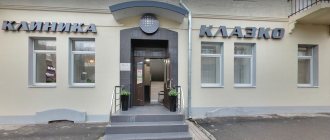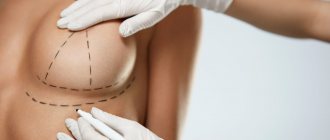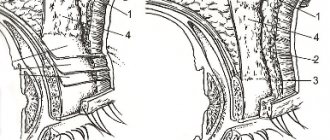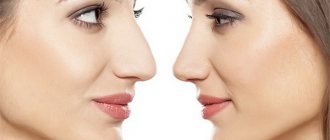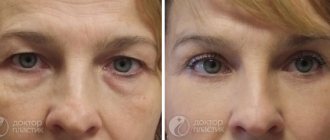Everyone dreams of perfectly smooth skin, but throughout life it is subject to various stresses and traumatic factors, as a result of which scars, scars, stretch marks and more often form on it. Very often, such defects are large in size or located in noticeable areas of the body, which causes serious aesthetic and psychological inconvenience. Modern medicine has learned to make such scars and scars as invisible as possible.
Laser resurfacing of skin imperfections using the latest generation American device AcuPulse CO2 is an aesthetic procedure that allows you to once again achieve smooth, tightened and beautiful skin!
Causes of problems
Various skin defects, such as scars, are aesthetic problems that many people face. The causes of their occurrence are most often hormonal changes, various diseases, surgical operations, and injuries. As a rule, the weaker half of humanity suffers greatly from stretch marks. However, modern medicine can come to the rescue and effectively correct scars of any type and at any stage. It is advisable to begin treating such formations as early as possible, because scar tissue tends to sprout with blood vessels 3-4 months after its occurrence, and then sprout with nerve endings, as a result of which the scar becomes part of the body.
The essence of the procedure
A laser is a special radiation with significant energy. To remove stretch marks, this energy is directed in the form of rays traveling in a beam, with intervals between individual streams. When hitting the stretch, the laser energy evaporates these torn fibers - but not entirely, which would lead to the formation of a scar - but in the form of columns of tissue. Also, some of the rays hit the healthy skin around the stretch mark.
As a result of such intentional damage to the integumentary tissue, this is what happens:
- the stretch area is reduced due to the fact that the areas opposite the laser-evaporated tissue tend to move closer to each other;
- fibroblast cells are activated in areas of healthy skin;
- they synthesize new elastin fibers and hyaluronic acid;
- newly formed skin structures “creep” onto the stretch area, replacing it with normal skin.
Thus, the laser significantly reduces the area of stretch marks: they are “pressed” around the perimeter by healthy skin, and they also narrow themselves, trying to “patch” defects formed by high temperature. If a capillary gets in the path of the laser, bleeding does not occur: under the influence of heat it is sealed.
Types of scars
When the integrity of the skin is damaged as a result of operations, burns, cuts, or previous skin diseases, a complex biological process called healing occurs. As a result of this process, connective tissue is formed that replaces the skin, covering defects. Ultimately, a scar is formed, which over time acquires the color of the skin and becomes as flat as possible.
Scars vary in appearance, depending on the depth, type of damaging factor, location, etc. The individual characteristics of the body, immunity, the presence of any diseases, including hereditary ones, etc. are also important here.
The choice of treatment method, its duration, and start time will primarily be affected by the type of scar. There are several main groups of scars:
- Normotrophic In this case, the scar is at the same level with the skin, it is thin and pale, characterized by elasticity similar to the elasticity of the skin.
- Atrophic As a rule, such scars have a very thin structure and are located slightly below the skin level; they are pale in color with a purple tint. Examples include scars caused by chickenpox or acne, as well as stretch marks. Characterized by a lack of connective tissue.
- Hypertrophic In this case, the scar is convex, rising above the surface of the skin, most often it has a pinkish color and clear boundaries. Such scars, as a rule, form after severe forms of acne, when a large amount of connective tissue was released during the healing process of the acne.
- Keloid scars of this type rise significantly above the surface of the skin. Features include high density, pain, itching, irregular shape, large area, red or blue color.
The goal of correcting any scar is to make it less noticeable, to align it with the skin in color and level.
Laser
During treatment, one of three types of laser can be used:
• for tightening (laser lifting);
• erbium (CO2): gives the effect of smoothing out unevenness, after which the surface of the skin becomes smooth and elastic.
• factional. It is considered the most effective of the three types of laser. It selectively affects the skin, penetrating deep into the layers of the dermis. Performs safe laser resurfacing and activates the secretion (production) of collagen.
Quite often, laser stretch mark removal is combined with any injection treatment.
Stretch marks
Stretch marks (striae) are atrophic scars that arise as a result of impaired elasticity and density of the skin, as well as as a result of microtraumas of the dermis caused by overstretching of the skin (often occur during puberty, and are also found on the body after childbirth). Striae do not have pigment, so they differ from the skin in color and do not acquire a tan shade under the influence of ultraviolet radiation.
Stretch marks on the face, as a rule, signal problems with hormonal levels. They are much less common than stretch marks on the abdomen, hips and other areas of the body. Laser resurfacing is the most effective way to remove stretch marks.
Operating principle of laser resurfacing
This procedure is completely safe, the effect of the laser on the skin is very gentle, but you should still trust it only to a professional.
Before the procedure, a special anesthetic cream is applied to the skin for 30-40 minutes. Also, in our clinic, during the entire period of laser exposure, special skin cooling is used using a Zimmer device (Germany). Thanks to anesthesia and a stream of cooled air that is supplied to the treatment area, the procedure is completely comfortable. Usually the procedure itself lasts about half an hour, after its completion a healing agent is applied to the skin to accelerate regeneration.
The principle of operation of the procedure is based on the fact that the laser beam penetrates the upper layers of the skin. If the defects are very serious, the specialist works more deeply, affecting the deeper layers of the dermis. This procedure is more complicated. If the defects are not so significant, grinding is more superficial. The high temperature of the laser triggers the process of evaporation of the surface layers of the dermis, resulting in the removal of scars, stretch marks and other problems from the face. It is worth noting that this procedure gradually destroys connective tissue and stimulates nearby healthy skin cells to divide. As a result, the skin looks firmer and more youthful. The procedure helps to lift it and increase elasticity. Fractional laser does not affect surrounding tissues; it acts in a targeted manner. Heat during laser resurfacing does not penetrate into the deeper layers of the skin, and no burns occur.
To get rid of small scars, one session of laser resurfacing may be enough; for deeper ones, a course of successive treatments will be required. The rehabilitation period reaches about two weeks.
It is also worth noting that the localization of scars, scars, their sizes are always individual, skin sensitivity is always different, so each patient before the procedure undergoes an examination and consultation with our doctor, who will take into account all individual characteristics and contraindications to the procedure.
How to remove old stretch marks: radiofrequency microneedling (RF microneedles)
Atrophic stretch marks are much more difficult to get rid of. Until recently, this was not possible at all. They are located deep in the skin, and the amount of normal tissue in the range is negligible. Therefore, a laser that reaches a depth of 1.5-2 mm may not be enough. And here the microneedle radiofrequency technique will help.
This method involves piercing the skin to a depth of 3.5 millimeters with a head equipped with 25 microneedles and simultaneously heating it. During the injection, a beam of radio waves is emitted, which heats the skin along the entire length of the needles. This provides a very strong stimulus (thermal and mechanical) stimulating fibroblasts to produce new elastin and collagen. It is important to note that the stimulus is given exactly where it is needed - in the middle of the range. The fibers twist and thicken, and new bonds are formed between them. Thus, deeply located stretch marks begin to fill in again and, as a result, disappear.
Recovery period
The rehabilitation period is individual and varies from 7 to 14 days. At this time, the skin is extremely sensitive. The doctor at our clinic must discuss with you all recommendations for skin care, depending on its initial condition, as well as depending on the number of sessions performed.
After the procedure you cannot:
- visit the sauna;
- take a hot bath;
- stay in the cold for a long time;
- subject the body to heavy physical activity;
- sunbathe (or it is imperative to use sunscreen with a high protective factor);
- visit the solarium.
It is important to strictly follow all the doctor’s recommendations, because the result is worth it.
Contraindications:
Laser resurfacing is possible at almost any age. However, there are a number of contraindications due to which this cosmetic procedure will have to be postponed for a while or completely canceled:
- Pregnancy, breastfeeding period;
- Fresh tan;
- Acute and chronic ailments during exacerbation;
- Diabetes;
- Blood diseases;
- Oncological diseases;
- Herpes viral infection;
- Epilepsy.
Our specialists
| Metelkina Natalia Evgenievna Dermatocosmetologist | Tskhovrebova Tinatin Guramovna Cosmetologist | Kuzovkina Nadezhda Viktorovna Cosmetologist-esthetician |
| Moreva Liliana Mikhailovna Dermatovenerologist, cosmetologist of the highest category | Kukhtina Olga Gennadievna Cosmetologist - esthetician |
Call right now at 8 (473) 254-11-11 or come to us at Voronezh, st. Krasnoarmeyskaya 17.
Advantages
- The procedure can be performed in areas of thin and delicate skin;
- Absence of swelling and various inflammations after the session;
- Relatively short recovery period;
- The risk of subsequent infections is eliminated.
This procedure is quite fast, has a minimum of possible complications and has an advantage over other cosmetic correction options.
Today, laser resurfacing of scars and stretch marks on the face and body is the most effective and safe way to get rid of the most serious skin defects.
Remove stretch marks with laser at a competitive price in Voronezh at Beauty Land Laboratory
Our aesthetic cosmetology center has extensive experience. The procedure is carried out by experienced and highly qualified specialists. The advantages of our clinic include:
- high degree of efficiency;
- speedy recovery;
- absolute safety;
- healthy tissues are not affected;
- sterility;
- highly qualified doctors;
- flexible pricing policy.
Our company offers the lowest prices in the city. Before the session begins, an agreement is signed, which stipulates all the circumstances of the operation. Sign up for the service, get high-quality service and effective results.
Prices
Laser peeling. Service code: A22.01.002
| Description of service | Cost of service, rub. |
| One procedure | 10000 |
Laser resurfacing of post-acne. Service code: A22.01.002
| Description of service | Cost of service, rub. |
| Face | 15000 |
| Cheeks/neck | 10000 |
| Forehead | 7000 |
Laser resurfacing rejuvenation. Service code: A22.01.002
Description of service Cost of service, rub. Face 15,000 Face with eye area 20,000 Circular laser blepharoplasty 12,000 Laser blepharoplasty (upper/lower eyelids) 7,000 Perioral zone 5,000Laser resurfacing of scars. Service code: A22.01.002
| Description of service | Cost of service, rub. |
| 1 sq. cm | 1000 |
Types of laser hair removal
The type of laser hair removal depends on the type of lasers used for it. Today there are four of them.
- Ruby laser (used extremely rarely, as it is obsolete) with a wavelength of 694 nm, which destroys the hair pigment and does not have a detrimental effect on its follicle.
- Alexandrite laser (popular) with a wavelength of 755 nm, which effectively removes hair of any color growing on skin of phototypes I – IV.
- Diode laser (popular) with a wavelength of 808 - 810 nm, which is capable of removing dark and dark brown hair on skin of phototype I - VI.
- Neodymium laser (due to its “aggressive” effect is used in exceptional cases) with a wavelength of 1064 – 1320 nm, which affects the hair pigment and causes coagulation (sealing) of the vessels feeding its follicle.
Knowing the wavelength of light is necessary to estimate its absorption coefficient. Long-wave exposure easily reaches the follicle. On the one hand, this is good, but on the other, it means that its energy can be absorbed by competing skin chromophores (melanin and water contained in the tissue), which leads to a decrease in the effectiveness of hair removal. While short-wave radiation does not reach the follicle, it is poorly absorbed by skin chromophores, but it specifically affects the pigment of the hair shaft.
If we compare procedures on popular devices with each other, then hair removal with an alexandrite laser is considered more delicate. While the use of a diode laser allows you to treat darker skin of the face and body.
The benefits and harms of laser hair removal
The use of laser technology guarantees long-term results that can be successfully maintained throughout life.
Among the obvious advantages of the procedure, the following relevant points can be noted:
- non-invasive - without damaging the integrity of the skin;
- non-contact – only the laser beam affects the skin;
- painlessness - the use of cooling and local anesthesia eliminates discomfort;
- sterility – laser light energy demonstrates a bactericidal effect;
- versatility - the procedure is suitable for women and men with any skin type and hair color;
- high efficiency – all unwanted hair in the active growth stage is removed.
At the same time, directly opposite information about the uselessness and danger of procedures is actively discussed on popular forums and social networks. Its implementation is surrounded by myths reminiscent of “horror stories” about the dangers of laser hair removal for the body: they say it leads to the development of candidiasis (thrush), cancer and increased hair growth. It’s easy to refute these myths - it’s enough to have basic knowledge in the field of medicine and human physiology.
Laser light energy has a pronounced bactericidal effect. Its effect inactivates (destroys) pathogenic microorganisms, including fungi of the genus Candida, the active reproduction of which leads to the development of candidiasis.
Therefore, there are no negative consequences of laser hair removal in the bikini area. In this case, the exact opposite effect is observed: an absolutely clean field of “norm” - a complete absence of fungal infection, which is confirmed by the polymerase chain reaction method.
Laser light energy does not provoke uncontrolled proliferation (reproduction) of cells, characteristic of oncogenesis. Its exposure does not lead to the development of cancer! Moreover, recently lasers have been actively used in the treatment of cervical cancer, after chemotherapy and radiation therapy.
Laser light energy does not enhance hair growth. After all, this process is controlled by hormones that are produced in the endocrine glands of the body. During treatment of problem areas, the laser has no effect on them.
It is difficult to say on what basis such ridiculous myths are born, forcing girls to wonder whether laser hair removal is harmful to health. Answering this question, we can say with complete confidence that in the absence of contraindications and the procedure is carried out correctly, it does not cause any harm to the body.
Is it worth doing laser hair removal: indications for the procedure
Shaving, which has become traditional, is today considered not only outdated, but also a potentially dangerous method of hair removal. Using a safety razor at home causes microtrauma to the skin and can cause infection. It provokes ingrown hairs and the development of folliculitis (inflammation of hair follicles).
Often, irritation appears on the shaved area of skin in the form of small rashes and the effect of the so-called “blue beard” - when the subcutaneous part of the dark hair is visible, which does not look aesthetically pleasing. In addition, using a razor does not guarantee long-term smoothness - many women notice hair regrowth by the end of the first or second day after shaving. However, this is not a reason to use a laser.
Before you sign up for the procedure, you need to objectively weigh the pros and cons of laser hair removal. If we are talking about removing rare, unnoticeable hair that grows slowly and is not prone to ingrown hairs, then you can get rid of them using waxing or sugaring. Regular use of wax and sugar paste in a beauty salon or private office will help curb their unwanted growth without much difficulty.
When thinking about the need for laser hair removal, you should understand that to achieve a lasting result you will need to undergo a long course of procedures. Its duration is purely individual, after which it will be necessary to regularly carry out maintenance procedures and unquestioningly follow all the recommendations of the cosmetologist. Therefore, before deciding for yourself whether or not to undergo laser hair removal, you need to have time, money and be prepared for changes in your usual lifestyle.
Unwanted hair growth is not harmful to the body. Therefore, there are no direct indications for the use of laser. But analyzing the reviews of doctors about laser hair removal and the opinions of girls who have already completed the full course, it is still worth resorting to it.
Especially if you have the following list of problems:
- Large amount of unwanted hair.
- Dark, highly visible, coarse hair.
- Inconspicuous and light hair, as well as isolated gray hairs.
- Rapid hair regrowth after depilation.
- Irritation, redness, itching of the skin after using a razor, wax or sugar paste.
- Tendency of hair to ingrown.
- Folliculitis.
- Hairs on areas of the skin that are difficult to reach with razors, wax and paste.
- Bluebeard effect.
Laser hair removal easily solves these problems and guarantees long-term smoothness of the legs, armpits, bikini and other areas. A pleasant bonus is the improvement and improvement of skin quality at the site of exposure to laser light energy.
